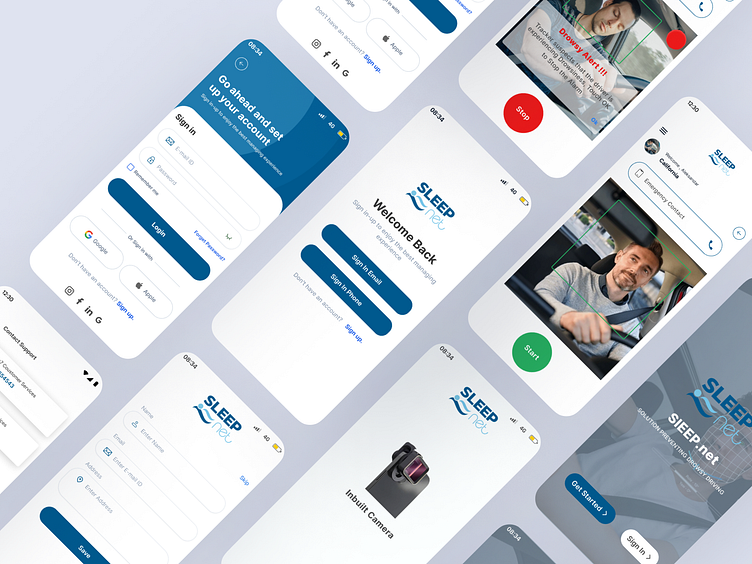Drowsy Driver App - Reducing Accidents through Real-time Monitor
Introduction: Drowsy driving is a significant cause of accidents worldwide, often resulting in fatalities and severe injuries. To combat this issue, our team developed a mobile application, "Drowsy Driver," aimed at detecting signs of drowsiness in drivers and alerting them to prevent accidents. This case study outlines the development process, features, and impact of the app.
Problem Statement: Drowsy driving contributes to a substantial number of road accidents globally. Despite awareness campaigns, many drivers underestimate their level of fatigue, putting themselves and others at risk.
Objectives:
Develop a mobile application capable of detecting signs of drowsiness in real-time.
Implement features to alert drivers when drowsiness is detected.
Collect and analyze data to assess the app's effectiveness in reducing accidents caused by drowsy driving.
Solution: The "Drowsy Driver" app utilizes advanced machine learning algorithms and smartphone sensors to detect signs of drowsiness. Key features include:
Real-time Monitoring: The app continuously monitors the driver's facial expressions, eye movements, and vehicle dynamics.
Machine Learning: Algorithms analyze data to identify patterns indicative of drowsiness, such as drooping eyelids or erratic driving behavior.
Alert System: When signs of drowsiness are detected, the app sends auditory and visual alerts to the driver, prompting them to take a break or pull over.
Data Logging: The app logs instances of drowsiness and driving behavior for post-analysis and improvement of detection algorithms.
Customization: Users can customize alert preferences and sensitivity levels based on their driving habits and preferences.
Implementation: The development process involved several stages:
Research and Planning: Extensive research was conducted on drowsy driving, existing solutions, and relevant technologies.
Design: User interface (UI) and user experience (UX) design were crucial to ensure ease of use and minimal distraction while driving.
Development: The app was developed for both iOS and Android platforms, utilizing native development tools and integrating machine learning libraries for data analysis.
Testing: Rigorous testing was conducted to ensure the app's accuracy in detecting drowsiness across different driving conditions and demographics.
Deployment: The app was released on major app stores after obtaining necessary approvals and certifications.
Results: Since its launch, the "Drowsy Driver" app has garnered positive feedback from users and safety organizations. Key outcomes include:
Accident Reduction: Preliminary data analysis suggests a significant decrease in accidents attributed to drowsy driving among app users.
User Engagement: High user engagement, indicated by frequent app usage and positive reviews highlighting its effectiveness.
Continuous Improvement: Ongoing updates and enhancements based on user feedback and data analysis to further improve detection accuracy and user experience.
Conclusion: The "Drowsy Driver" app represents a proactive approach to addressing the pervasive issue of drowsy driving. By leveraging technology and real-time monitoring, the app empowers drivers to make informed decisions and potentially save lives on the road. As we continue to iterate and improve the app, we aim to further enhance its impact in reducing accidents and promoting safer driving habits globally.
What do you guys think?
Let me know in the comments section!
🫶🏻 Press "L' to show some love and to share your comments in the section below
💌 Have a project idea? I am available for hire Kalpanagoshinga@gmail.com
